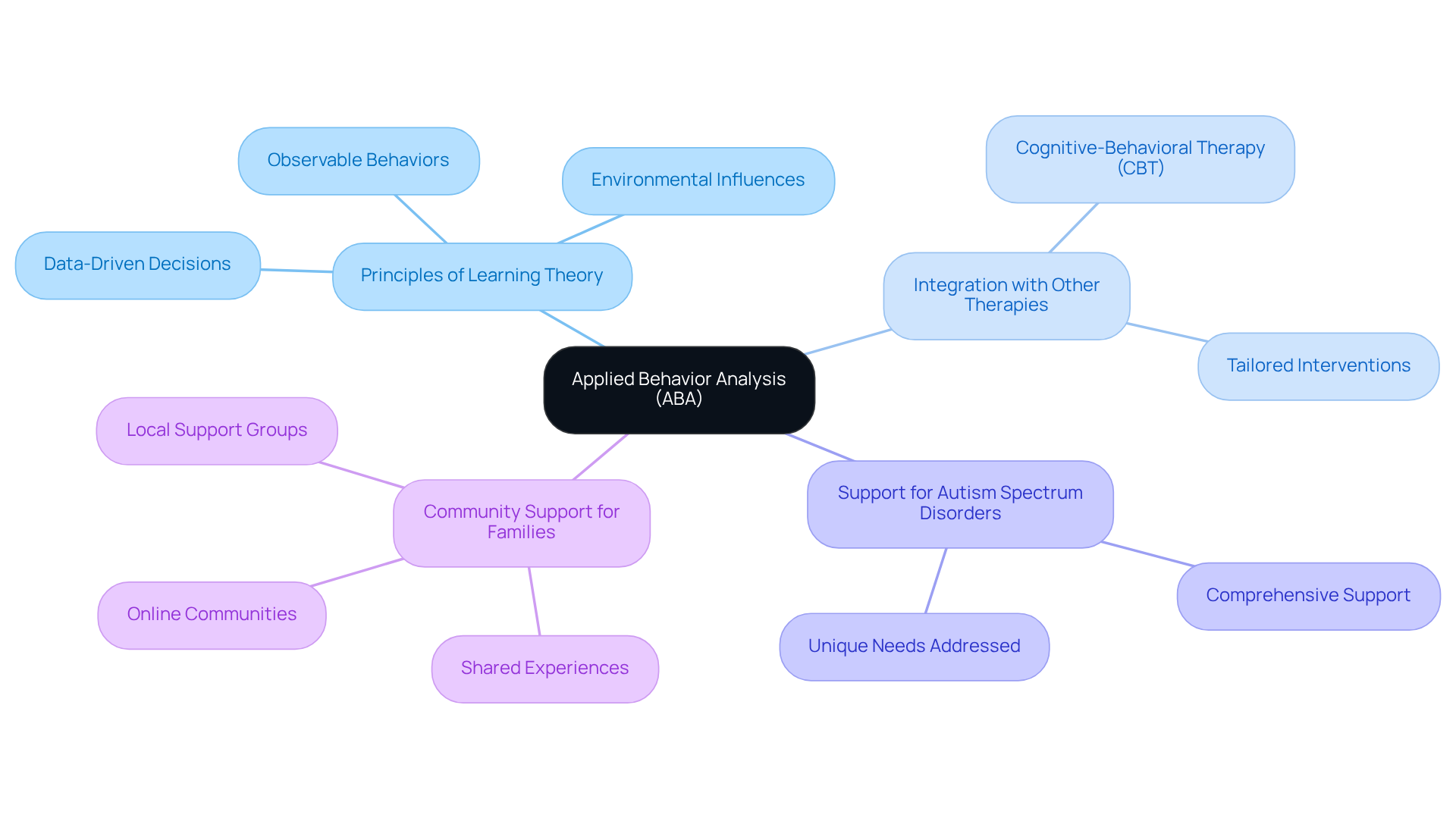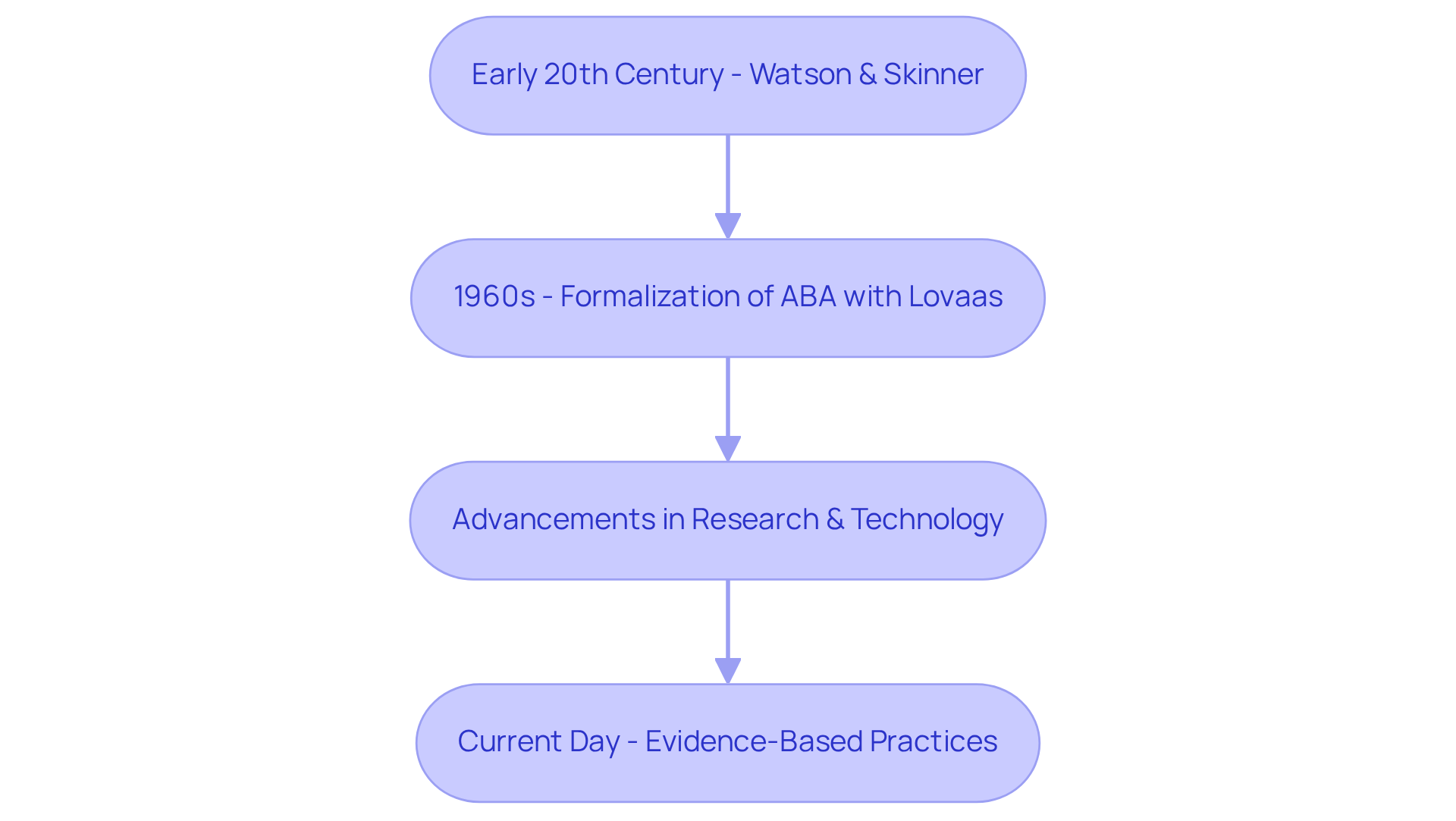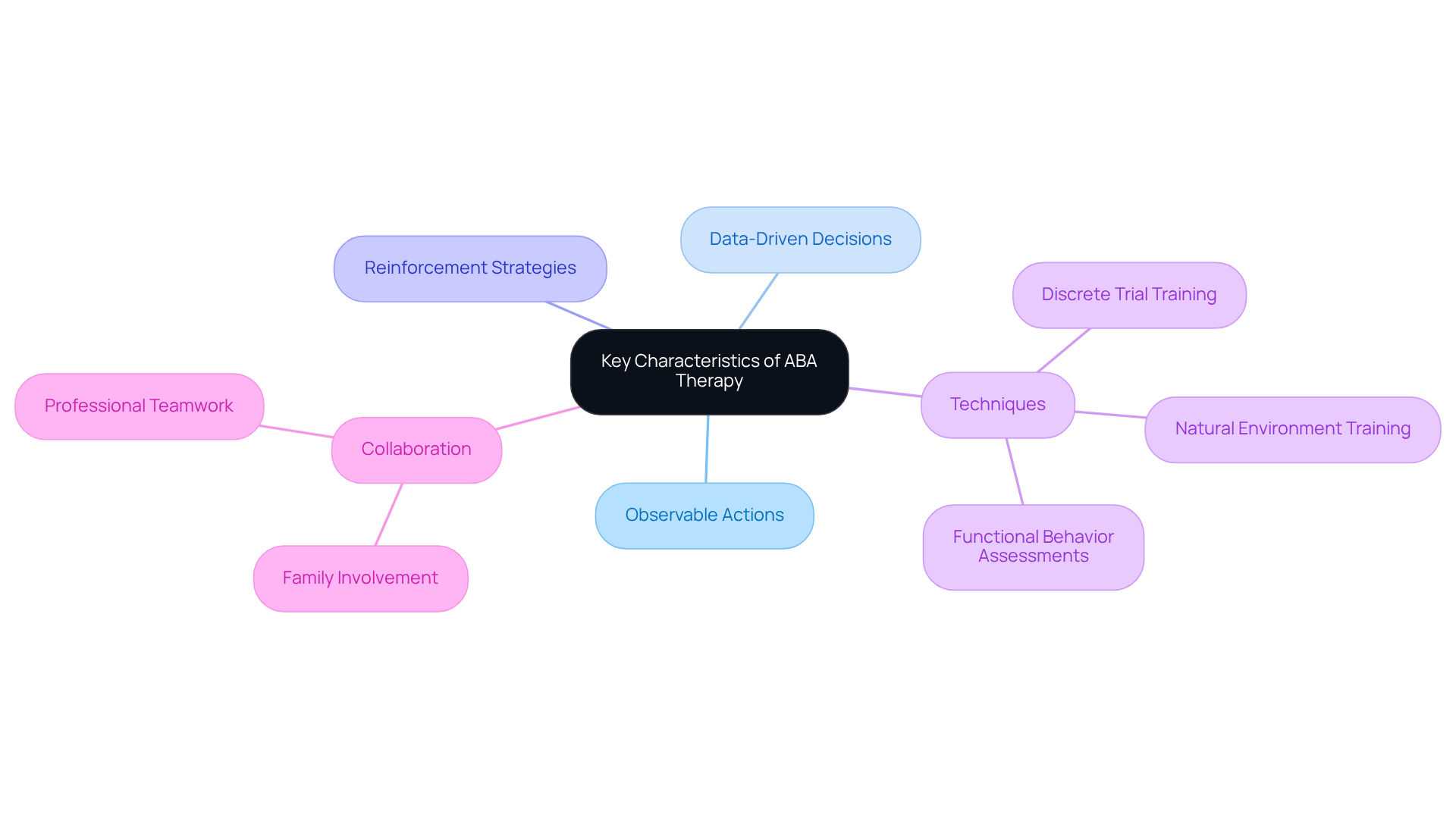Overview
This article delves into the meaning of "aba#" within the framework of Applied Behavior Analysis (ABA), highlighting its definition, context, and essential features that enhance human behavior, especially for individuals with autism. It illustrates ABA's compassionate approach, tracing its historical evolution and emphasizing its commitment to measurable outcomes through techniques like positive reinforcement. These elements work together to significantly improve the quality of life and foster independence for those it serves.
As we explore this topic, it’s important to consider the challenges many parents face. Understanding ABA can be a journey, filled with questions and uncertainties. By sharing insights and experiences, we can create a supportive community that encourages learning and growth.
If you’re navigating this path, know that you’re not alone. There are resources and support systems available to help you every step of the way. Together, we can foster a deeper understanding of ABA and its profound impact on enhancing lives.
Introduction
Understanding the intricacies of Applied Behavior Analysis (ABA) invites us into a compassionate approach to enhancing human behavior through systematic interventions. This method not only supports individuals with autism and developmental conditions but also empowers families by providing effective strategies for fostering independence and social integration.
As the field evolves, many families may wonder:
- How can they navigate the myriad of techniques within ABA to ensure the best outcomes for their loved ones?
Exploring these dimensions of ABA offers valuable insights into its definition, context, and key features, ultimately guiding readers toward informed decisions in their therapeutic journeys. Together, let’s embark on this path of understanding and support.
Define Applied Behavior Analysis (ABA)
Applied Behavior Analysis (ABA) is an approach that embodies the aba# meaning of compassion in understanding and enhancing human behavior through systematic interventions. At its core, aba# meaning is rooted in the principles of behaviorism, which teaches us that our actions can be learned and transformed through reinforcement and thoughtful behavioral strategies. Many families have found that ABA meaning serves as a lifeline, especially when supporting loved ones with autism and other developmental conditions. By employing techniques like positive reinforcement, prompting, and careful data collection, aba# meaning encourages desired behaviors while gently reducing challenging ones.
The ultimate goal of aba# meaning is to enrich the quality of life for individuals, equipping them with essential skills that foster independence and social integration. Imagine the joy of seeing your child develop the ability to navigate social situations confidently or master daily living skills that promote their autonomy. As we explore the world of ABA together, we invite you to share your experiences and questions. Your journey is unique, and we are here to provide the support and resources you need to make informed decisions for your loved ones.

Contextualize ABA in Behavioral Therapy
ABA, or Applied Behavior Analysis, is a compassionate branch of behavioral intervention that encompasses various techniques aimed at positively changing actions, which illustrates the aba# meaning through the principles of learning theory. While behavioral therapy includes diverse methods, such as cognitive-behavioral therapy (CBT), the aba# meaning stands out by focusing on observable behaviors and the environmental factors that influence them. This dedication to measurable outcomes and data-driven decisions highlights the aba# meaning that sets it apart from other therapeutic approaches.
In practice, ABA is often integrated with other therapeutic methods, providing comprehensive support for individuals with autism and related disorders. This ensures that interventions are tailored to meet the unique needs of each person, fostering an environment where they can thrive. By understanding these methods, parents can feel empowered to seek the best possible assistance for their children, knowing that their specific challenges and strengths are acknowledged and addressed.
If you’re navigating this journey, remember that you are not alone. Many families face similar challenges, and sharing your experiences can be incredibly beneficial. Consider reaching out to local support groups or online communities where you can connect with other parents who understand your journey. Together, we can create a nurturing environment that supports the growth and development of every child.

Trace the History and Evolution of ABA
The origins of Applied Behavior Analysis (ABA) can be traced back to the early 20th century, thanks to the pioneering efforts of behaviorists like John B. Watson and B.F. Skinner. Their groundbreaking work laid the foundation for understanding human actions through empirical research.
In the 1960s, ABA began to formalize as a distinct discipline, significantly influenced by Dr. Ole Ivar Lovaas, who developed early interventions for children with autism. Over the decades, ABA has evolved remarkably, embracing advancements in research and technology. This evolution has led to the creation of evidence-based practices that are now widely embraced in educational and therapeutic settings.
Today, the term ABA represents a leading approach for addressing the unique needs of individuals with autism. Ongoing research continues to refine and enhance its methodologies, ensuring that support remains effective and compassionate.

Identify Key Characteristics of ABA Therapy
When it comes to supporting your child, understanding the key characteristics of ABA therapy and its aba# meaning can be incredibly empowering. This approach emphasizes observable actions, harnesses data to inform decisions, and applies reinforcement strategies to encourage positive change. As an ABA practitioner, I perform thorough evaluations to identify specific target actions, crafting personalized intervention strategies that are regularly monitored and adjusted based on your child’s progress.
Techniques such as discrete trial training, natural environment training, and functional behavior assessments are often utilized to facilitate learning and skill acquisition. These methods are designed not only to teach but to engage your child in meaningful ways. Moreover, ABA therapy highlights the importance of collaboration with families and other professionals. This teamwork fosters a holistic approach to treatment, creating an inclusive environment that nurtures your child’s growth and development.
As you explore ABA therapy, remember the aba# meaning that you are not alone in this journey. Many families have navigated similar paths, and sharing experiences can be incredibly beneficial. If you have questions or need support, don’t hesitate to reach out to professionals or connect with other parents who understand the challenges and triumphs of this process.

Conclusion
Applied Behavior Analysis (ABA) embodies a compassionate and systematic approach to understanding and enhancing human behavior. By focusing on observable actions and employing evidence-based techniques, ABA seeks to improve the quality of life for individuals, particularly those with autism and developmental challenges. The essence of ABA lies in its potential to transform lives through tailored interventions that promote independence and social integration.
In this article, we have explored key insights into the definition, context, and evolution of ABA. The historical development of ABA highlights the foundational work of behaviorists and the ongoing refinement of its methodologies. The integration of ABA with other therapeutic practices underscores its versatility and effectiveness in addressing the unique needs of individuals. Moreover, the emphasis on collaboration among families and professionals fosters a supportive environment for growth.
Recognizing the profound impact of ABA therapy invites us to reflect on the significance of compassionate intervention in behavioral health. As families navigate their journeys, sharing experiences and seeking community support can be invaluable. Embracing the principles of ABA not only empowers individuals but also strengthens our collective understanding of how to foster meaningful change in the lives of those affected by developmental challenges. Together, let us continue to advocate for compassionate support and resources that uplift our communities.
Frequently Asked Questions
What is Applied Behavior Analysis (ABA)?
Applied Behavior Analysis (ABA) is an approach that focuses on understanding and enhancing human behavior through systematic interventions based on the principles of behaviorism.
How does ABA help individuals with autism and developmental conditions?
ABA serves as a lifeline for many families by employing techniques such as positive reinforcement, prompting, and careful data collection to encourage desired behaviors and reduce challenging ones.
What is the ultimate goal of ABA?
The ultimate goal of ABA is to enrich the quality of life for individuals by equipping them with essential skills that foster independence and social integration.
What techniques are commonly used in ABA?
Common techniques used in ABA include positive reinforcement, prompting, and careful data collection.
How can ABA impact a child's development?
ABA can help children develop the ability to navigate social situations confidently and master daily living skills that promote their autonomy.




